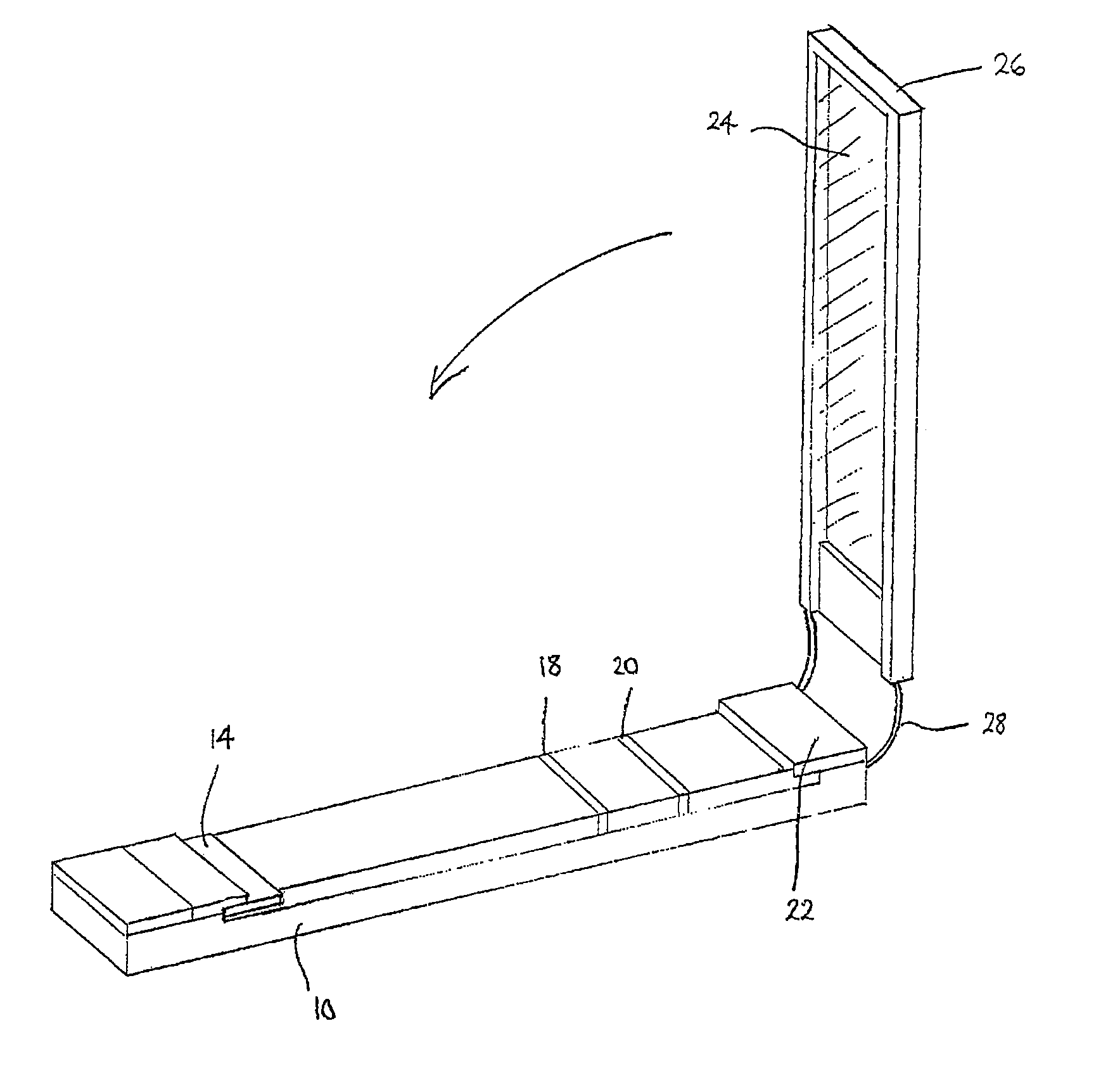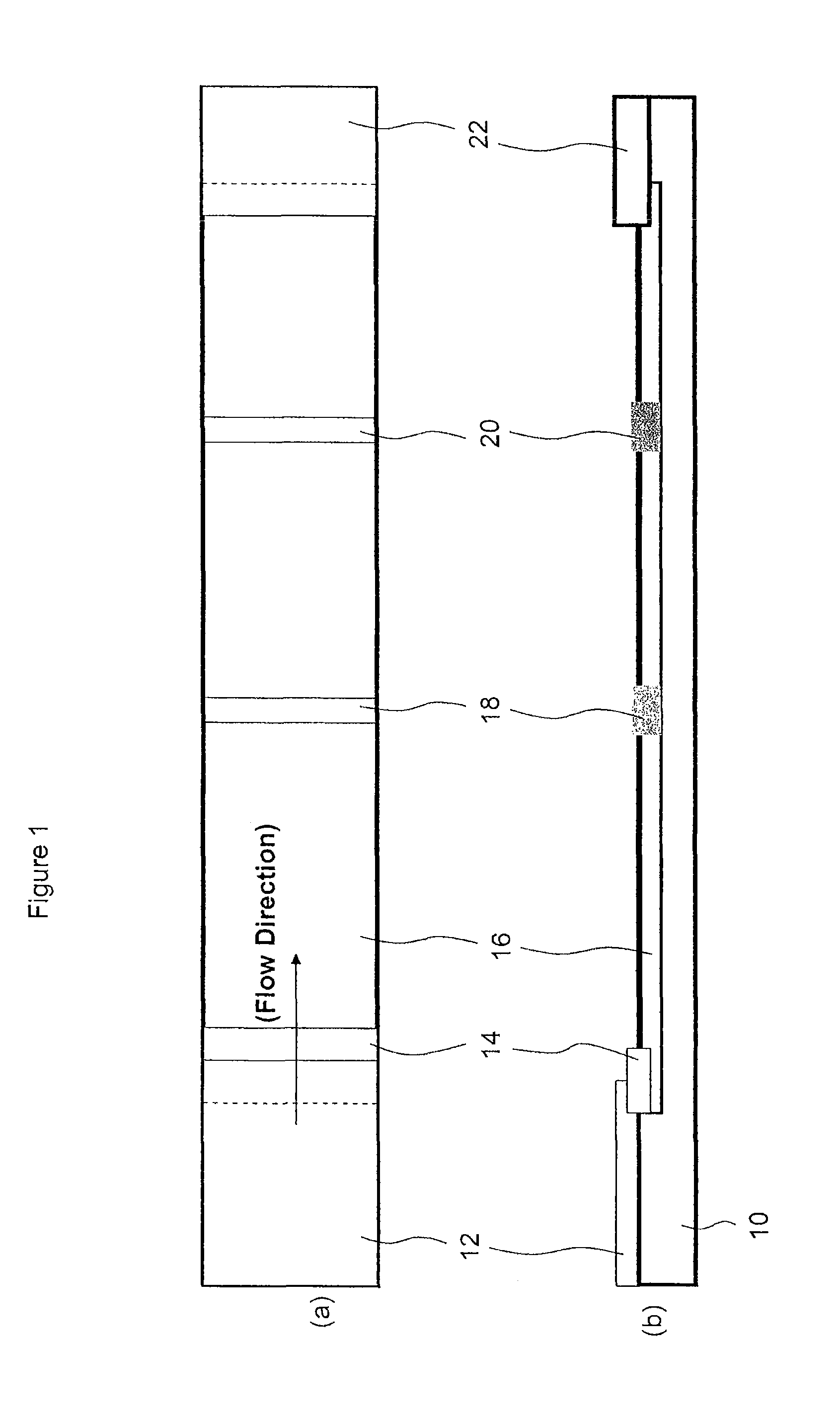Methods of signal generation and signal localization for improvement of signal readability in solid phase based bioassays
a solid phase based bioassay and signal localization technology, applied in the field of analytes' assays, can solve the problems of unresolved techniques, unsatisfactory analytical sensitivity, and high sensitiveness of quantitative assays, so as to improve the readability of signals, hinder the diffusion of signal molecules, and maintain the effect of sharpness
- Summary
- Abstract
- Description
- Claims
- Application Information
AI Technical Summary
Benefits of technology
Problems solved by technology
Method used
Image
Examples
example 1
Preparation of the DMSO-Based Carrier Medium for the Initiation of FDA-Crystal Amplification Procedure
[0109]The carrier medium for FDA is composed of DMSO, NaOH and Polysorbate 20, in which the purpose of the DMSO is to dissolve the FDA and NaOH is used to hydrolyse the dissolved FDA. Polysorbate 20 is the active component for gel formation. Specifically, the constituents are mixed together (e.g., mixing 1 ml of DMSO+1 ml of 1M NaOH+50 μl of Polysorbate 20) and left to stand at room temperature for 5-10 minutes for solidification.
[0110]Table 1 shows the optimisation of the compositions and of the appearance of certain carrier media in the form of matrix gels.
[0111]
TABLE 1Compositions and appearances of matrix gelsTweenSDSHard-Name20*20%SDRnessColorClarity100T50S100 ml50 ml850 mlFYellowX100T0S100 ml 0 ml900 mlScolorlessX 50T50S 50 ml50 ml900 mlScolorlessX 50T0S 50 ml 0 ml950 mlFPaleLyellow 25T25S 25 ml25 ml950 mlScolorlessL′ 25T0S 25 ml 0 ml975 mlScolorlessL 0T25S 0 ml25 ml975 mlLiqu...
example 2
Preparation of the Iso-Propanol (IPA) Based Carrier Medium for FDA Amplification Procedure
[0112]The IPA based carrier medium for FDA is composed of IPA, NaOH and polyvinylpyrrolidone (PVP), in which the purpose of the IPA is to dissolve the FDA and NaOH is used to hydrolyse the dissolved FDA. PVP is used to increase the viscosity of the carrier medium. Specifically, the constituents are mixed together (e.g., mixing 1 ml of IPA+1 ml of 1M NaOH+0.2 g of PVP).
example 3
Application of Carrier Medium on Microtitre-Plate Based Test
[0113]1 μg of Gt-α-MIgG was coated as a dot on a nylon membrane placed inside each well of a microtitre plate by means of a microsyringe pump with a diameter of 1 mm. The plate was then dried under vacuum for 2 hours. After that, the plate was washed by a washing buffer [10 mM PBS, 0.1% (w / v) BSA, 0.5% (w / v) Polysorbate-20] 5 times. The wells were then blocked with 100□μl of 1% of BSA solution at 37° C. for 30 minutes. 25 μL of MIgG (100 μg / L) and 25 μL of biotin-Gt-α-MIgG were added to each well and incubated at 37° C. for 1 hour. After 5 washing cycles, avidin conjugated with FDA nanocrystals was added to each well and incubated again at 37° C. for 1 hour. After 5 washing cycles, the carrier medium as described in Example 2 was added to each well. A fluorescent dot was observed instantly under a UV light. This scheme was described above with reference to FIG. 5 for multi-target detection.
PUM
| Property | Measurement | Unit |
|---|---|---|
| diameter | aaaaa | aaaaa |
| affinity | aaaaa | aaaaa |
| transparent | aaaaa | aaaaa |
Abstract
Description
Claims
Application Information
 Login to View More
Login to View More - R&D
- Intellectual Property
- Life Sciences
- Materials
- Tech Scout
- Unparalleled Data Quality
- Higher Quality Content
- 60% Fewer Hallucinations
Browse by: Latest US Patents, China's latest patents, Technical Efficacy Thesaurus, Application Domain, Technology Topic, Popular Technical Reports.
© 2025 PatSnap. All rights reserved.Legal|Privacy policy|Modern Slavery Act Transparency Statement|Sitemap|About US| Contact US: help@patsnap.com



